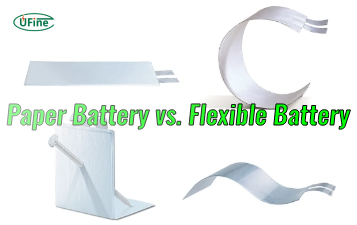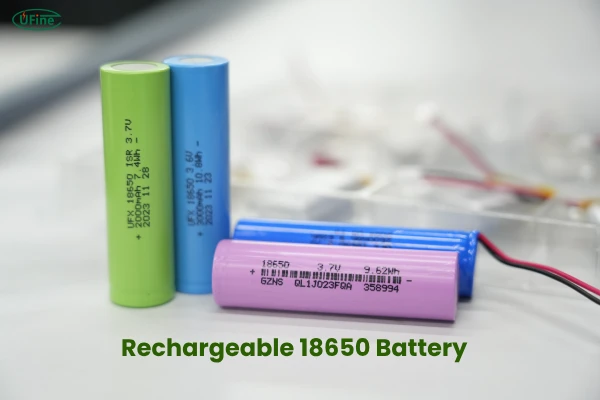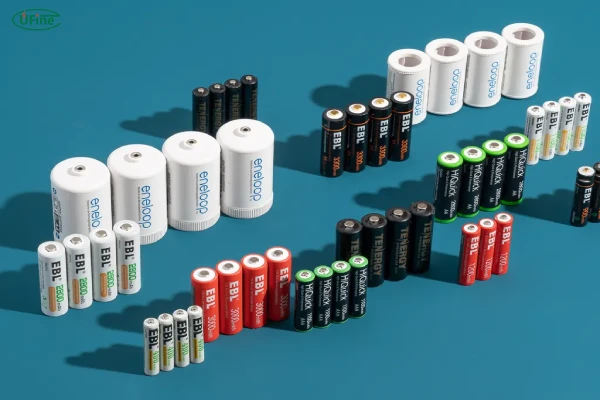Part 1. Understand Big Round Batteries
Big round batteries. You’ve seen them. You’ve probably used them. But have you really understood them?
These batteries, often cylindrical in shape and larger than button cells, are the unsung heroes behind many of the devices we rely on every day. They’re not flashy. They don’t scream for attention. But without them, many of our tools, toys, and emergency devices would simply stop working.
Big round batteries are called just that because of their distinct, cylindrical appearance. They’re “big” compared to coin or button batteries and “round” because of their circular, tube-like form. While the shape is simple, what lies inside is powerful, precise, and purpose-built.
From powering flashlights during a blackout to keeping a child’s favorite toy alive, these batteries quietly do their job. And they do it well—if you choose the right one. But that’s the trick, isn’t it?
To choose the right big round battery, we first need to understand the two major categories: rechargeable and non-rechargeable.
Part 2. Rechargeable Big Round Battery Types
Rechargeable big round batteries are like the reliable friend you can always count on. They’re reusable, cost-effective over time, and better for the environment. Let’s take a deeper look into the most common types:
2.1 Lithium-Ion (Li-ion) Batteries
Li-ion big round batteries are known for their high energy density and long life span. You’ll find them in laptops, flashlights, drones, power tools, and even electric vehicles.
- Voltage: Typically 3.6V or 3.7V
- Capacity: Varies widely, from 1500mAh to 5000mAh or more
- Common size: 18650, 21700
21700 vs 18650 Battery:What Difference is between them?
Why do people love Li-ion batteries? Because they pack a punch in a small size. Plus, they don’t suffer much from the memory effect—meaning they can be recharged before being fully drained without losing capacity.
But they also need care. Overcharging or overheating can damage them. That’s why quality matters when choosing a Li-ion battery.
2.2 Nickel-Metal Hydride (NiMH) Batteries
NiMH batteries are popular in household devices—remote controls, cameras, toys, and more.
- Voltage: Usually 1.2V
- Pros: Affordable, widely available, safer to use
- Cons: Self-discharge is higher than Li-ion
They’re a solid choice for anyone who wants a simple, rechargeable solution. No need for special chargers or worry about explosion risks.
2.3 Nickel-Cadmium (NiCd) Batteries
A bit older, but still found in some tools and emergency equipment. NiCd batteries are extremely durable and can perform well even in extreme temperatures.
- Downside: They suffer from the memory effect
- Plus side: Cheap and tough
NiCd is fading from the mainstream, but it’s still relevant where ruggedness is more important than energy efficiency.
Part 3. Non-Rechargeable Big Round Battery Types
Now, let’s talk about their single-use counterparts. Sometimes, you don’t need a battery to last forever. You just need it to last long and be reliable—especially in low-drain or standby devices.
3.1 Alkaline Batteries
Ah, the classic alkaline battery. Probably the most recognizable battery type in the world.
- Voltage: 1.5V
- Common Sizes: AA, AAA, C, D
- Best For: Toys, clocks, remote controls, flashlights
Alkaline batteries are cheap and easy to find. They don’t leak easily. And they last long enough for most general uses.
3.2 Lithium (Non-rechargeable) Batteries
Not to be confused with Li-ion, these are disposable but powerful. They last longer, perform better in harsh environments, and have an impressive shelf life.
- Uses: Cameras, GPS units, medical equipment
- Shelf Life: Often 10 years or more
If you’re prepping for emergencies or need something that won’t let you down in extreme cold or heat, this is it.
3.3 Zinc-Carbon Batteries
They’re basic, budget-friendly, and perfect for devices that don’t need much power.
- Voltage: 1.5V
- Use Case: Clocks, remote controls
Zinc-carbon batteries don’t last as long as alkaline or lithium, but they cost less. For simple jobs, that’s sometimes all you need.
Part 4. Common Big Round Battery Sizes
Let’s get real: size matters. The wrong size battery won’t just fail—it might damage your device. So knowing the common sizes is crucial.
- D Battery: Large, powerful, long-lasting. Ideal for heavy-duty flashlights, boomboxes, and lanterns.
- C Battery: Slightly smaller, often used in musical instruments and medium-sized toys.
- 18650 Battery: Li-ion type, very popular in high-drain devices like laptops and flashlights.
- 21700 Battery: Newer Li-ion size. More energy than 18650, used in power tools and electric vehicles.
- AA & AAA Batteries: Technically smaller, but still cylindrical. Ubiquitous in almost every household item.
Always read your device manual. Don’t guess. A 21700 won’t fit where an 18650 goes—even though they look similar.
Part 5. Common Uses of Big Round Batteries
Big round batteries are versatile. They don’t just power things—they enable our lives to run smoothly.
- Emergency Flashlights: When the power goes out, they step in.
- Toys: From talking dolls to remote-control cars, they keep the fun alive.
- Medical Devices: Blood pressure monitors, thermometers, portable oxygen machines—lives depend on them.
- Power Tools: Cordless drills and saws run on powerful Li-ion big round batteries.
- Cameras: Especially professional ones. You can’t risk running out of power mid-shot.
They’re everywhere. And when they fail, we feel it. That’s why choosing the right battery isn’t just smart—it’s essential.
Part 6. How to Choose Big Round Batteries? 7 Key Parameters
It’s easy to just grab the cheapest battery off the shelf. But that could cost you more in the long run. Here’s what you really need to consider:
- Voltage – Check the required voltage of your device. Wrong voltage = potential damage.
- Capacity – Measured in mAh (milliamp hours). Higher means longer use.
- Rechargeability – Do you need to reuse it or just need it to last once?
- Size Compatibility – Always double-check physical size and battery holder.
- Temperature Tolerance – Will it be used in freezing cold or scorching heat?
- Discharge Rate – Some devices need a steady stream of power.
- Brand and Build Quality – Cheap batteries leak. Premium ones last.
Take a few minutes to consider these. It’ll save you hours of frustration later.
Part 7. Common Brands of Big Round Batteries
When it comes to batteries, brand matters. It’s not just about prestige—it’s about performance and safety.
- Duracell – Long-lasting and reliable. A household name.
- Energizer – Great for both rechargeables and non-rechargeables.
- Panasonic – Strong presence in lithium and NiMH categories.
- Samsung SDI – A leader in 18650 and 21700 Li-ion cells.
- Sony (Murata) – Produces high-quality Li-ion cylindrical cells.
- Ufine Battery – A Chinese brand that offers custom battery solutions. From ultra-thin to high-rate and temperature-resistant batteries, they provide solid industrial-grade options.
Trusted brands invest in quality control, safety features, and performance testing. It shows.
Part 8. FAQs
What is the difference between a D battery and a C battery?
D batteries are larger and have more capacity. Both are 1.5V, but D lasts longer.
Can I mix rechargeable and non-rechargeable big round batteries?
No. Mixing them can lead to leakage or damage. Always use the same type.
Why do my big round batteries leak?
Cheap or expired batteries are prone to leaking. Always store them properly and don’t mix old and new ones.
How long do rechargeable big round batteries last?
Typically 300–1000 cycles, depending on the type and how well you care for them.
Are lithium-ion batteries safe?
Yes, if used with proper chargers and not exposed to extreme heat or damage. Quality matters here.
Related Tags:
More Articles

Paper Battery vs. Flexible Battery: What’s the Difference and Which Is Better?
Paper vs. flexible batteries: learn the key differences, benefits, and which power source fits best for wearables, sensors, and smart tech.
What to Know Before Buying a Tiny LiPo Battery for Your Project
Tiny LiPo batteries are powerful and compact. Learn how to choose the right one for your project with specs, safety, and charging tips.
Bloated LiPo Battery: Will It Explode?
Will a bloated LiPo battery explode? Discover the causes, risks, safety steps, and expert tips to avoid disaster and protect your gear. Must-read safety guide!
12V 100Ah Lithium Ion Battery Price: Full Guide
Learn about 12V 100Ah lithium-ion battery price, from cost ranges to best brands, hidden fees, and how to get the best deal. A must-read for smart buyers!
Resistance and Conductivity: What It Means for Your Lithium Batteries
Resistance and conductivity impact lithium battery performance, lifespan, and safety—learn how they work and why they matter.





